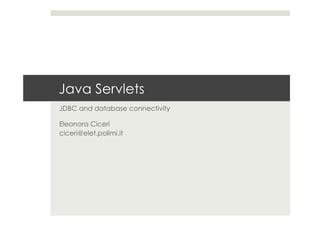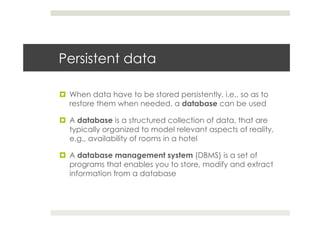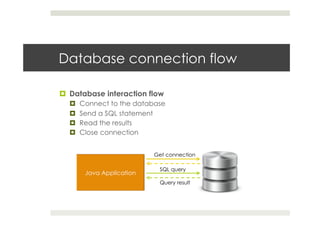This document provides an overview of using Java Database Connectivity (JDBC) to connect to and interact with relational databases from Java servlets. It describes relational databases and how they organize data into tables. It explains the basic JDBC connection flow of getting a connection, executing SQL statements, and reading results. It also covers key JDBC interfaces like Connection, Statement, and ResultSet. The document provides an example servlet for looking up phone numbers from a database and discusses best practices like reusing connections and using connection pooling.



















![CallableStatement (1)
¤ The interface used to execute SQL stored procedures
¤ The provided syntax allows stored procedures to be called in
a standard way for all RDBMSs.
¤ Call: connection.prepareCall(java.lang.String)
¤ The syntax requires one result parameter (optional,
indicated as OUT) and several IN/OUT parameters.
Parameters are referred using numbers, starting from 1
¤ {?= call <procedure-name>[<arg1>,<arg2>, ...]}
¤ {call <procedure-name>[<arg1>,<arg2>, ...]}](https://image.slidesharecdn.com/tiw-jdbc-130810051047-phpapp01/85/JDBC-in-Servlets-20-320.jpg)





